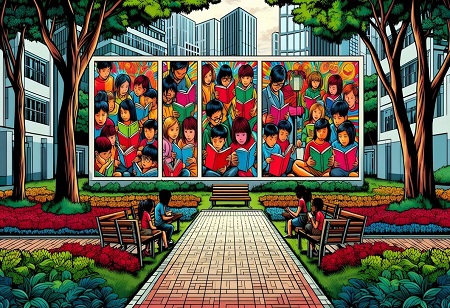
Let’s picture this: you’ve moved to Bengaluru for your new job, or be it Pune, Hyderabad, Gurgaon, or Pune. You are going through tight deadlines in the office, heavy traffic on roads, and your mobile flooded with notifications from food delivery apps – But still! despite your heart habituated to hustle and bustle life, you feel something missing, a feeling of living in a home away from home. The place, the vibe, the aura where you know your neighbors’ names, share gossip after hectic work or cook with friends on a lazy day.
Yes, for many Gen Zs living in urban cities, this is the sad reality – Digitally connected, but emotionally distant. And that’s where coliving enters!
 Market-leading Developers Share Insights on CoLiving Spaces
Market-leading Developers Share Insights on CoLiving Spaces
Santhosh Kumar, Vice-Chairman, ANAROCK Group states, “Genuine buyers have certainly come forward to buy their dream home in large numbers, post the pandemic. But to say that this will impact co-living spaces is not correct. Firstly, we do have a huge unmarried workforce, and most bachelors still prefer to rent co-living spaces. Another category of people utilizing the co-living facility are working professionals or students”.
Kahraman Yigit, Co-Founder & CEO, Olive Hospitality notes, “Considering the extensive offerings by co-living spaces, along with ensuring enhanced safety protocols, this alternative will gradually become a necessity for modern migrants as they adjust and familiarise themselves with the new normal”.
Nikhil Sikri, CEO & Co-founder, Zolostays says, “We are using Artificial Intelligence (AI) similar to dating and matchmaking websites to pair roommates. We have introduced an algorithm to match people based on personalities. A personality test is conducted before we assign rooms. We survey each person to know what exactly they want when availing of our services. Food and safety are key priorities for many who approach us. Hence, the co-living industry has come a long way from just being perceived as service apartments”.
Uday Lakkar, CoHo.in unveils, “This is a consumer lifestyle business, not a real estate or technology one”.
Saurabh Shatdal, Managing Director, Land & Capital Markets, Cushman & Wakefield expresses, "Co-living is an extension of rental or joint-family living. India today has a millennial population of 440 million, including migrant singles living in PGs. They are facing issues about rising rent and shrinking pockets. They are ambitious and hardworking. The Model Tenancy Act will institutionalize co-living and we will see its direct effects as millennials start returning from their hometowns to larger metros."
Ultimately, in this disconnected world, coliving brings back the essence of connected living – where comfort, community, and happiness blend to thrive. More than offering just a space to stay, it presents a lifestyle deeply rooted in shared understandings that value the way you live.
We use cookies to ensure you get the best experience on our website. Read more...
Copyright © 2025 HomesIndiaMagazine. All Rights Reserved.